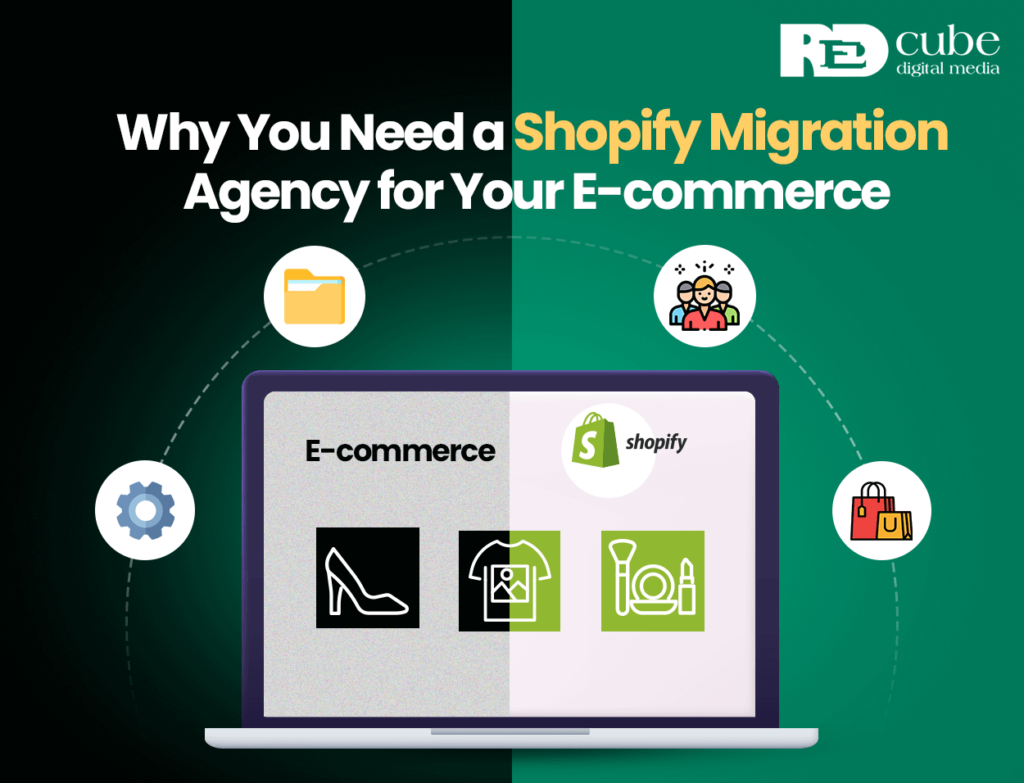Imagine a world where you no longer have to find a store that stocks and sells the goods you want to buy, or even order them from a warehouse. Do you think it is possible that you can reach the global market and sell products from your home? Of course, as the traditional retail model is moving to its different stages of transformation, Shopify dropshipping becomes the contemporary solution for the hunched entrepreneur.
With the worldwide dropshipping market expected to increase exponentially to $557.9 billion by 2025 (Research and Markets, 2023), what keeps you from joining this fabulous experience? It could be that you are afraid of failure or inexperienced, or you simply suspect that Shopify Dropshipping is only a trick.
The attractiveness of a dropshipping scheme stems from its being a place for a flexible working schedule and money to enjoy life. Is it, however, a piece of cake to do things in this way? Here, we will dwell on the flip side of the discussion and find out the issues and possibilities of starting out with this entrepreneurship pattern. Have you got a new way to a future that you could never have imagined?
Understanding Shopify Dropshipping
Definition and Core Concepts
Shopify dropshipping is a business model that exploits the powerful capabilities of Shopify’s e-commerce platform and makes it possible for entrepreneurs to set up and operate their online stores with great ease, a crucial sector in the current world economy.
This is a simple concept in which you choose a list of products to sell in your store without having to pay upfront for an inventory. Alternatively, you can give the order of the customer, you will become a partner with your models, they will control your stock, package, and shipping directly to the client, and after a while, you forget about the product.
This therefore makes it possible for you to focus on marketing and brand growth as the order delivery issues are dealt with by the suppliers. It is therefore an easy way to join the e-commerce world without the limitations of the conventional retail sector.
Key Components:
- Shopify platform setup and management
- Product selection and supplier relationships
- Order fulfillment automation
- Customer service handling
- Marketing and sales strategies
Why Choose Shopify for Dropshipping?
Platform Benefits
1. User-Friendly Interface
- Intuitive store builder
- Customizable templates
- Mobile-responsive designs
2. Built-in Tools
- Sales analytics
- Inventory tracking
- Payment processing
- Marketing tools
3. Integration Capabilities
- Multiple supplier connections
- Social media integration
- Email marketing tools
- Customer relationship management
Setting Up Your Shopify Dropshipping Business: Step By Step Guide
1. Creating Your Shopify Account
Getting Started
- Visit Shopify.com and click “Start Free Trial”
- Enter your email address, password, and store name
- Complete the initial questionnaire about your business
2. Shopify Pricing Plans for Dropshipping

Let me break down each Shopify plan with its features and help you understand which might be best for your dropshipping business.
Starter Plan (₹399/month)Best for: Social media selling and testing the waters
Key Features:
- Social media selling capabilities
- 5% transaction fee for third-party payment providers
- Limited online store functionality
- 2 inventory locations
- Basic POS features
Limitations:
- Restricted online store features
- Higher transaction fees
- Limited inventory management
Basic Plan (₹1,994/month) Best for: New dropshippers and solo entrepreneurs
Key Features:
- Full-featured online store
- 2% transaction fee for third-party payment providers
- 10 inventory locations
- 24/7 chat support
- Access to 3 international markets
- POS Lite included
Additional Benefits:
- Blog functionality
- Free SSL certificate
- Abandoned cart recovery
- Manual order creation
- Discount code creation
Shopify Plan (₹7,447/month) Best for: Growing businesses with small teams
Key Features:
- Everything in Basic, plus:
- 1% transaction fee for third-party payment providers
- 5 additional staff accounts
- Professional reports
- Enhanced security features
Advanced Features:
- Gift card creation
- Advanced report builder
- Custom permissions for staff accounts
- Better shipping rate calculations
Advanced Plan (₹30,164/month) Best for: Scaling businesses with high volume
Key Features:
- Everything in Shopify plan, plus:
- 0.6% transaction fee for third-party payments
- Custom reporting capabilities
- Enhanced analytics
- 15 additional staff accounts
- 10x checkout capacity
- Option to add more international markets (₹4,898/month per market)
Premium Features:
- Advanced user permissions
- Third-party calculated shipping rates
- Custom report builder
- Advanced automation tools
Comparison Table
| Feature | Starter | Basic | Shopify | Advanced |
|---|---|---|---|---|
| Monthly Price (INR) | 399 | 1,994 | 7,447 | 30,164 |
| Transaction Fee | 5% | 2% | 1% | 0.60% |
| Staff Accounts | 1 | 2 | 7 | 17 |
| Inventory Locations | 2 | 10 | 10 | 10 |
| International Markets | No | 3 | 3 | 3+ |
| Support | 24/7 Chat | 24/7 Chat | Priority 24/7 Chat |
Special Offer
All plans come with a 3-day free trial, followed by a special introductory rate of ₹20 for the first month.
Choosing the Right Plan
For New Dropshippers:
- Start with the Basic plan if you’re serious about building a business
- The Starter plan is too limited for proper dropshipping operations
- Upgrade as your business grows
For Growing Businesses:
- Consider the Shopify plan when you need:
- Multiple staff accounts
- Lower transaction fees
- Professional reporting
- Enhanced features
For High-Volume Sellers:
- The Advanced plan makes sense when:
- You’re processing high numbers of orders
- Need advanced reporting
- Require multiple staff accounts
- Want the lowest transaction fees
Cost-Benefit Analysis
Transaction Fee Impact Example: For ₹1,00,000 monthly sales:
- Starter: ₹5,000 in fees
- Basic: ₹2,000 in fees
- Shopify: ₹1,000 in fees
- Advanced: ₹600 in fees
Break-Even Analysis: To justify upgrading from Basic to Shopify (₹5,453 monthly difference):
- You need to process approximately ₹5,45,300 in monthly sales for the reduced transaction fees to cover the
difference in plan cost
Plan Selection Tips
- Consider Your Stage
- Just starting: Basic plan
- Growing team: Shopify plan
- High volume: Advanced plan
- Calculate Transaction Fees
- JEstimate monthly sales
- Compare fee percentages
- Factor in payment provider fees
- Evaluate Features Needed
- Staff accounts required
- Reporting needs
- International market access
- Think Long-Term
- Start with room to grow
- Plan for scaling
- Consider upgrade timing
Remember: You can upgrade or downgrade your plan at any time based on your business needs and growth patterns.
2. Choosing Your Niche
Market Research Process
- Analyze Market Demand
- Use Google Trends to track interest over time
- Study search volume with tools like SEMrush or Ahrefs
- Monitor social media engagement in potential niches
- Competition Analysis Create a spreadsheet tracking:
- Number of competitors
- Their pricing strategies
- Marketing approaches
- Unique selling propositions
- Customer reviews and feedback
3. Profit Margin Calculations
| Product Cost (INR) | Selling Price (INR) | Shipping (INR) | Profit Margin |
|---|---|---|---|
| ₹500 | ₹1,499 | ₹150 | 56% |
| ₹1000 | ₹2,999 | ₹200 | 60% |
| ₹2,000 | ₹4,999 | ₹250 | 55% |
| ₹3,000 | ₹7,999 | ₹300 | 59% |
| ₹5,000 | ₹12,999 | ₹400 | 58% |
Detailed Breakdown Example
Let’s break down one example in detail:
For a product costing ₹1,000:
-
- Cost Structure:
- Product Cost: ₹1,000
- Shipping: ₹200
- Platform Fee (2% on Basic Plan): ₹60
- Payment Gateway Fee (2%): ₹60
- Marketing Cost (10%): ₹300
- Revenue:
- Selling Price: ₹2,999
- Total Revenue: ₹2,999
- Profit Calculation:
- Cost Structure:
Gross Profit = Selling Price – (Product Cost + Shipping + Fees + Marketing)
₹2,999 – (₹1,000 + ₹200 + ₹120 + ₹300) = ₹1,379
Profit Margin:
Profit Margin = (Gross Profit / Selling Price) × 100
(₹1,379 / ₹2,999) × 100 = 46%
Popular Price Points in Indian E-commerce
| Category | Common Price Points (INR) | Typical Margins |
|---|---|---|
| Fashion | ₹499 – ₹1,499 | 45-65% |
| Electronics Accessories | ₹299 – ₹999 | 35-50% |
| Home Decor | ₹799 – ₹2,999 | 50-70% |
| Beauty Products | ₹399 – ₹1,299 | 55-75% |
| Lifestyle Products | ₹599 – ₹1,999 | 45-65% |
Cost Considerations for Indian Market
1. GST Impact
- 5-28% depending on product category
- Input tax credit availability
- Interstate vs. Intrastate Considerations
2. Shipping Costs by Zone
Zone A (Metro Cities): ₹50-150
Zone B (Tier 2 Cities): ₹70-200
Zone C (Tier 3 Cities): ₹100-250
3. Payment Gateway Fees
- Razorpay: 2-3%
- PayU: 2-2.5%
- Cashfree: 1.99-2.5%
Competitive Price Analysis
Tips for Pricing in Indian Market
| Category | Markup Strategy | Typical Margin |
|---|---|---|
| Budget Segment | 30-40% markup | 25-35% |
| Mid-Range | 50-70% markup | 35-45% |
| Premium | 100%+ markup | 45-60%+ |
- Psychological Pricing Points
- ₹499 instead of ₹500
- ₹1,999 instead of ₹2,000
- ₹9,999 instead of ₹10,000
- Festival Season Considerations
- Higher margins possible
- Account for increased ad costs
- Plan for bulk discounts
- Regional Pricing Strategy
- Metro cities can sustain higher prices
- Tier 2/3 cities need competitive pricing
- Consider local purchasing power
3. Finding Reliable Suppliers
Supplier Evaluation Checklist
- Initial Assessment
- Years in business
- Number of clients
- Industry certifications
- Business registration verification
- Quality Control Process
- Sample ordering procedure
- Quality inspection methods
- Defect rate tracking
- Return handling process
- Communication Testing
- Response time tracking
- Language proficiency
- Problem resolution capability
- Available communication channels
4. Store Design and Setup for Shopify Dropshipping
Key Design Elements
1. Homepage Layout

- Hero section with main value proposition
- Featured products carousel
- Trust indicators and social proof
- Newsletter signup
- Clear navigation menu
2. Product Page Optimization Essential elements:

- High-quality product images
- Detailed descriptions
- Clear pricing
- Size guides when applicable
- Shipping information
- Customer reviews section
3. Mobile Optimization Checklist:

- High-quality product images
- Detailed descriptions
- Clear pricing
- Size guides when applicable
- Shipping information
- Customer reviews section
4. Brand Consistency Style guide elements:
- Color palette
- Typography
- Logo usage guidelines
- Image style
- Voice and tone
Check out these top Shopify E-Commerce Websites designsfor inspiration
These detailed layouts and tools will help you create a professional, user-friendly dropshipping store. Remember to regularly test and optimize each element based on user feedback and analytics data.
3 Essential Tools for Shopify Dropshipping
Must-Have Applications
- Product Research Tools
- Oberlo
- DSers
- Spocket
- Printful
- Marketing Tools
- Email marketing platforms
- Social media management tools
- SEO optimization apps
- Analytics software
- Customer Service Solutions
- Help desk software
- Live chat applications
- FAQ builders
- Order tracking systems
Marketing Your Dropshipping Store
Effective Strategies
- Social Media Marketing
- Platform selection based on target audience
- Content calendar creation
- Engagement strategies
- Paid advertising campaigns
- Search Engine Optimization
- Keyword research
- Product description optimization
- Meta tag optimization
- Content marketing
- Email Marketing
- Welcome sequences
- Abandoned cart recovery
- Customer retention campaigns
- Promotional newsletters
Financial Aspects of Shopify Dropshipping
Understanding the Numbers
- Startup Costs
- Shopify subscription (₹399-₹30,164/month)
- Domain name (.com domain: ₹1,000-₹1,500/year / .in domain: ₹700-₹1,000/year)
- Marketing budget (variable)
- App subscriptions (variable)
- Operating Expenses
- Payment processing fees
- Marketing costs
- Customer service tools
- Returns and refunds
- Profit Calculation
- Product cost
- Shipping fees
- Platform fees
- Marketing expenses
- Net profit margins
Common Challenges and Solutions
Challenge 1: Product Quality Control
- Solution: Order samples from suppliers
- Establish quality-checking procedures
- Maintain strong supplier communication
Challenge 2: Shipping Times
- Solution: Use local suppliers when possible
- Set clear customer expectations
- Offer tracking information
Challenge 3: Customer Service
- Solution: Implement automated responses
- Create detailed FAQ sections
- Provide multiple contact channels
Success Stories and Case Studies
Real-World Examples
- Successful Store: GymShark Started as a dropshipping business and grew into a major fitness brand.
- Industry Statistics:
- 27% of online retailers have adopted dropshipping (2023 Digital Commerce 360)
- Average profit margin: 15-45% (BigCommerce Research)
- Success rate: 10-20% of new stores (Shopify Data)
Best Practices for Long-Term Success
- Quality Assurance
- Regular supplier evaluation
- Product testing
- Customer feedback analysis
- Customer Experience
- Fast response times
- Clear communication
- Efficient problem resolution
- Business Growth
- Data-driven decisions
- Continuous market research
- Strategic planning
Legal Considerations for Shopify Dropshipping
Important Aspects
- Business Registration
- Choose business structure
- Register your company
- Obtain necessary permits
- Policies and Procedures
- Privacy policy
- Return policy
- Terms of service
- Shipping Policy
Future of Shopify Dropshipping
Emerging Trends
- Automation and AI
- Automated order processing
- AI-powered customer service
- Predictive analytics
- Sustainability Focus
- Eco-friendly products
- Sustainable packaging
- Ethical sourcing
The Final Note
Eventually, dropshipping through Shopify is a good start for an entrepreneur who wants to set up an online store in the e-commerce field because he/she will not be required to store products or deal with gistics. By the deep understanding of the major parts and the creation of the great opportunities of this platform you will be able to structure an online store that is unique to you.
Despite the above-mentioned shortcomings like unreliability of the product or bad service quality, the pluses of a safe financial scenario, personal time, and the capability of building your brand of choice among, other things make it a good experience.
When all is said and done, the real mastery lies in the fact that you have to be able to learn and be flexible to the changes that come thereby and if possible also outshine the strategies that you develop with the supplier you can work with.
Use the two-pronged scheme of tools, technology, and great supplier network ties, while putting a premium on the value of the direct customer relationship. With the determination and well-laid plans, one can easily translate the mental image to the reality of their eCommerce business.
Turn your Shopify dropshipping project into reality or a fact in this instance now! A single step can be the beginning of your entrepreneurial journey to success.
Are you ready to launch your own Shopify dropshipping project? Visit our Shopify page at RedCube Digital and find out how to build and optimize your dropshipping store with us. We are longing to hear your ideas, so don’t be shy and post your reasonings and questions in the comments section below.
FAQ Section
Q: How much money do I need to start dropshipping on Shopify?
A: You can start with approximately ₹40,000-₹80,000, covering platform fees, basic marketing, and initial setup costs. Here’s a basic breakdown:
- Shopify Basic Plan: ₹1,994/month
- Domain Name: ₹1,000-₹1,500/year
- Initial Marketing Budget: ₹20,000-₹40,000
- Apps and Tools: ₹5,000-₹10,000
- Product Testing/Samples: ₹8,000-₹15,000
- Miscellaneous Costs: ₹5,000-₹12,000
Q: What is the average profit margin in dropshipping?
A: Typical profit margins range from 15% to 45%, depending on your niche and business strategy.
How long does it take to set up a Shopify dropshipping store?
A: Basic setup can be completed in 1-2 days, but a fully optimized store might take 1-2 weeks.
Q: Can I run a dropshipping business part-time?
A: Yes, many successful dropshippers start part-time while maintaining other employment.
Q: What are the most common mistakes to avoid?
A: Key pitfalls include poor supplier selection, inadequate market research, and insufficient customer service planning.



